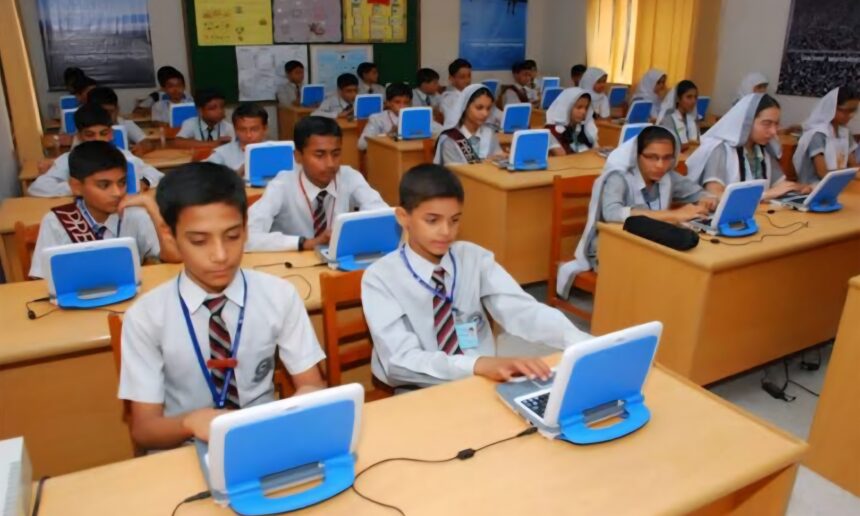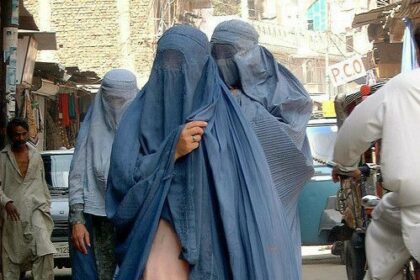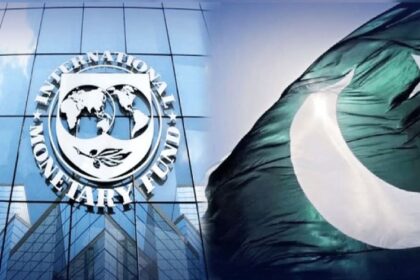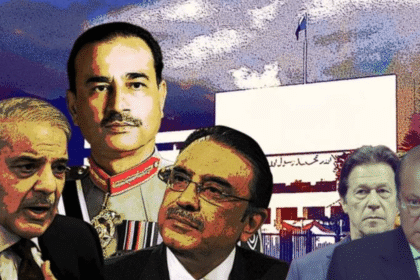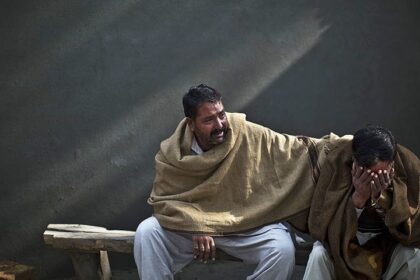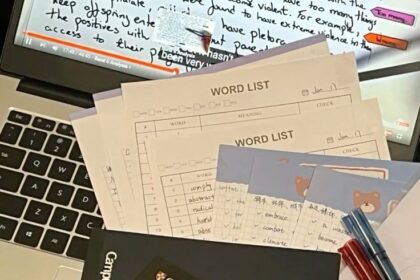Fragmented education breeds inequalityŌĆöUNHSD envisions unity, equity, skills, and national renewal.
┬Ā
Imagine a magical hat that sorts children at the age of 14, not by bravery or intellect, but by the futures predetermined by money, ZIP Code, and birth accident. On one side: Air-conditioned classrooms in Lahore where students study for Cambridge and SAT exams ŌĆö ready to flee, not serve ŌĆö the land that raised them. On the other hand, a crowded matriculation high school in Sialkot, where students cram math equations because the outdated curriculum does not allow them to think outside the box. And then there are Madrassahs ŌĆö cut off from modern knowledge, their students excluded from the stream of careers they could dream of. This is PakistanŌĆÖs fragmented education system, sorting children into separate realities like a machine manufacturing inequality.ŌĆ»┬Ā
Pakistan is significantly weaker than its neighbours and scores low on global education indices, particularly literacy enrollment, learning outcomes, and even equity in education. LetŌĆÖs have a look on the stats first, which are not very impressive:┬Ā
- 7% of secondary students attend elite private schools for O/A levels, while less than 75% attend public/private schools for Matric/Inter (ASER Pakistan 2023)┬Ā
- 2.5 – 3.5 million students are enrolled in Madrassahs,┬Ā
- which offer free education but are often disconnected from formal employment pathways (NEMIS 2016)┬Ā
- The literacy rate is around 62 to 65% (for males it is 68%, and for females it is around 52 to 53%)┬Ā
- PakistanŌĆÖs combined federal/provincial education spending average is just 1.7% of GDP, which is less than half of UNESCOŌĆśs recommendation of 4 to 6%┬Ā
- Pakistan is among the top five countries with the highest number of out-of-school children, with 22.8 million OOSC (out of school children) (UNICEF 2023)┬Ā
- 56% of madrasah students fail basic science and math in equivalence tests (IBCC 2023)┬Ā
- 58% of grade 5 students in public schools cannot read grade 2 sentences (ASER 2023)┬Ā
- 92% of O/A level instructions are in English only and in public schools it is only 11% according to PEF 2022┬Ā
- Public universities reserve 80-90% seats for Matric/Inter students, yet O/A level graduates dominate admissions to top programs like LUMS and IBA due to perceived ŌĆ£superiorityŌĆØ (HEC 2022)┬Ā
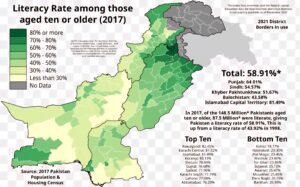
The struggle of freedom from British India was not merely political; it was a war between knowledge systems. Colonial education policies designed to produce ŌĆ£a class of persons Indian in colour and blood, but English in tasteŌĆØ (Lord Macaulay 1835) ŌĆō sought to erase autochthonous epistemologies and linguistic pride. Yet, visionaries like Chaudhary Rahmat Ali transformed education into a renegade tool of resistance, recognizing that true independence demanded intellectual decolonization as much as territorial sovereignty.
Pakistan gained independence as a nation, but its soul remains captive, imprisoned by prejudice and inequality in access to knowledge. Our education system divides children into 32+ Silos (provincial matric/inter, Cambridge OA levels, madrasah boards like wafaq-ul-madaris offering different certificates like SSC/HSSC, O/A level, or Dars-e-Nizami, respectively) that complicate the transition between systems and reinforcing social stratification. And whatŌĆÖs the cost? A bleeding of talent, inequality, and a citizenry fractured along ideological lines. This Flotilla explains why Pakistan ranks 136/146 as per World Population Review 2024 education ranking, where the elite sail yachts, the masses cling to rafts, and millions remain marooned on islands of isolation. This is national self-sabotage.┬Ā
O/A levels are not ŌĆśglobalŌĆÖ ŌĆō they are colonial 2.0 manufacturing Anglophile elites that see local knowledge as ŌĆ£backward systemsŌĆØ. Born as the GCE (British General Certificate of Education) to maintain imperial academic influence, their pedagogy still prioritizes Eurocentric knowledge while charging Rs. 150,000/year, excluding tuition fees. The students analyze OrwellŌĆÖs dystopia, but not their own citiesŌĆÖ water mafia dystopia. This isnŌĆÖt education. This is alienation.┬Ā
On the other hand, public schools with dilapidated buildings, a lack of teachers or books, and even ŌĆ£shelterlessŌĆØ schools in the open, further widen the gap with well-resourced private schools. And then self-governed Madrassahs through wafaqs (boards) have no federal oversight because post-1947, governments failed to reform them. While elite students dissect Shakespeare, public schools and Madrassahs teach outdated syllabi. All systems fail: one ignores local realities, one kills curiosity, and the other does not impart skills employable for the formal economy. This cannot stand. The solution demands systemic intervention. But here is the cure: an integrated Unified National High School Diploma (UNHSD)┬Ā
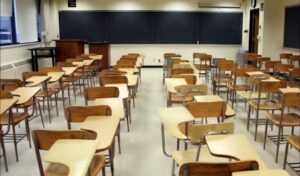 Unlike the ideological single national curriculum initiative, which was a partial step that prescribed unified content for grades 1 to 12 in public and private schools (not Madrassahs or Cambridge) and ignored diversity, UNHSD will dismantle the fragmented education system and replace it with a unified standard. One size fits all. Skeptics will cry ŌĆśdumbing down,ŌĆÖ but does memorizing Wordsworth while children die thirsty truly measure intelligence?┬Ā
Unlike the ideological single national curriculum initiative, which was a partial step that prescribed unified content for grades 1 to 12 in public and private schools (not Madrassahs or Cambridge) and ignored diversity, UNHSD will dismantle the fragmented education system and replace it with a unified standard. One size fits all. Skeptics will cry ŌĆśdumbing down,ŌĆÖ but does memorizing Wordsworth while children die thirsty truly measure intelligence?┬Ā
Post-18th Amendment, provinces controlled their curricula, but a Unified National High School Diploma ŌĆö created by teachers from Kashmir to Karachi ŌĆö can ensure a student from Chitral competes fairly with a student from Lahore. Standardize skills (critical thinking problem-solving, climate literacy etc), not textbooks. Fund the provinces to localize: KPŌĆÖs hydrology modules, SindhŌĆÖs Delta ecology units, PunjabŌĆÖs farming etc. Unity in purpose, diversity in practice. The UNHSD must be paired with OOSC (Out-of-School Children) amnesty pathways and be made radically accessible to OOSC. UNHSD would not be just an education reform; it would be a national reset. It will ensure: no childŌĆÖs education is limited by their familyŌĆÖs income, our education system reflects our own identity, not colonial vestiges, and that every student graduates with actual skills, not just a piece of paper (degree). Finland unified its diploma 50 years ago. Today, the children in Heli┼äski slums and Lapland Village share the same rigorous, flexible curriculum. Result? Among the top 10 global education systems. A lot can be learned from countries like Finland that have transformed education into a driver of social mobility and national progress.┬Ā
The government must meet global benchmarks in education spending and boost the spending to 5% of its GDP. Subjects need to be taught bilingually, ensuring that no student is neglected due to linguistic barriers. No more ŌĆ£English = elite or Urdu = backward mindsetŌĆØ. Less than 8% of grade 6 to 12 textbooks feature Pakistani authors; therefore, books need to be updated as well with a decolonized curriculum that teaches from a culturally rooted perspective, and also introduces madrassah students to mainstream skills training to protect them against radicalization. No more O/A level tax, ending the burden of Cambridge exams. Project-based learning focusing on solving real-world problems, e.g, production of water conservation systems for Thar or prototyping tech for small and medium scale enterprises etc, rather than through textbook wallowing.┬Ā
A flood is coming, not of water, but one of technical turmoil, climate chaos, and global uncertainty. Our fragmented education system leaves us strictly insecure. An integrated UNHSD would not just be an educational reform; it would be an arch that will help develop our own world-class, equitable, and culturally rich education system, forging a generation of bright thinkers still cogent in their local and global languages, equipped to solve PakistanŌĆÖs problems with simplicity and unity. The first step is believing that we can. Then, we build.┬Ā






